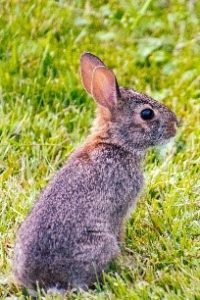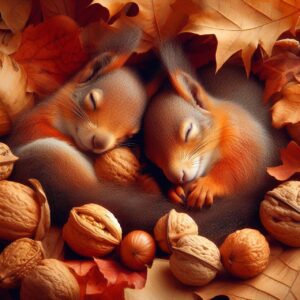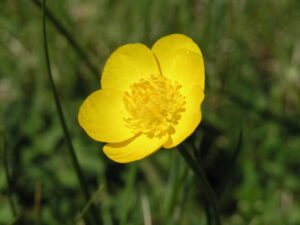At Rockingham Forest Park, our woodlands are a firm favourite with the Hare. Hares are larger than rabbits and have longer ears. Although many people confuse them, hares are their own unique species that have special traits and behaviours.
They can run up to 45 miles per hour making them the fastest-running wild mammal in Britain!!
The Hare’s elongated ears range from 2.4 – 4.3 inches from the notch to tip and their coat can be brown, grey, tan, white and black. Hares are quite solitary, moving close to the ground or using long grasses, called ‘forms’ to avoid detection, those lovely long ears slicked to their backs.
They have powerful hind legs that can propel them on leaps of more than three metres and are excellent swimmers.
Their upper lips are split, concealing a pair of long front incisors that never stop growing, however, with teeth that magnificent they must keep them ground down by constant gnawing and chewing.
Hares are herbivorous and prefer to eat grass and other plant life but also supplement their diets with fruits, vegetables, seeds, nuts, and some fungi. They have an excellent sense of smell, hearing, and vision. This offers them 360° panoramic vision allowing them to detect predators from all directions.
- Fun Fact: A male hare is called a Jack; the female is a Jill. A group of hares is called a ‘drove.’
Normally shy animals, hares change their behaviour in spring when they can be seen in broad daylight chasing one another around meadows with the males fighting for dominance.
During this frenzy hare can be seen ‘boxing.’ This is usually not competition between males, but a female hitting a male.
Hares sleep above ground, usually in fields with long grasses, rushes and other tall plants. They also like to sleep (the phrase ‘lie-up’ is used as it’s not known if they are really sleeping or just sitting/resting there) underneath hedges, or in wooded areas.
Females nest in a depression on the surface of the ground, rather than in a burrow, and young are active as soon as they are born. Young hares are adapted to the lack of physical protection, relative to that afforded by a burrow, by being born fully furred with eyes open and can fend for themselves soon after birth. 
Hares come out to feed in late evening, returning to their forms around dawn. Summer evenings are a suitable time to catch sight of them as the longer days mean they come out earlier (before dusk) and come back later to fit their feeding into the short night.
Written by Faye Mcgregor








